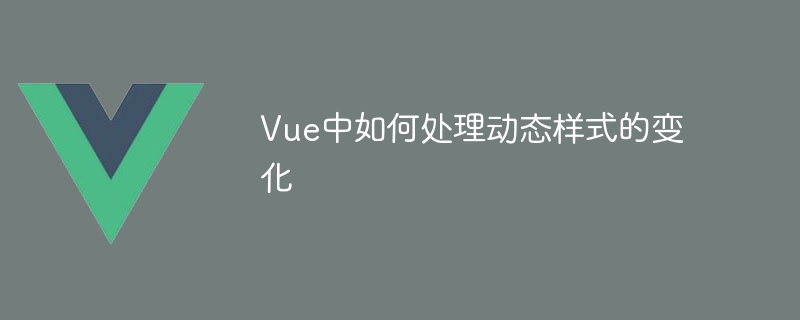

How to handle dynamic style changes in Vue
In Vue, we often need to dynamically change styles based on changes in data. This can be achieved by using Vue’s data binding and computed properties. The following will introduce in detail how to handle dynamic style changes and give specific code examples.
1. Data binding and style binding
The most basic way to deal with dynamic styles in Vue is to use data binding and style binding. By binding style properties to data, when the data changes, the style changes accordingly.
First, define a data attribute in the Vue instance to control style changes. For example, we can define a data attribute calledisRedto control whether the background color of the element is red:
data() { return { isRed: false } }
Then, we can usev-bind## The # directive binds the style attribute to this data attribute. For example, we can bindisRedto thebackground-colorattribute of the element:
Hello Vue!
isRedisWhen true, the background color of the element will become red; whenisRedisfalse, the background color of the element will become white.
isRedandisBold, which are used to control the background color and font weight of the element respectively:
data() { return { isRed: false, isBold: false } }
customStyleto return a dynamic style object:
computed: { customStyle() { return { 'background-color': this.isRed ? 'red' : 'white', 'font-weight': this.isBold ? 'bold' : 'normal' } } }
v-binddirective to bind the computed property to On thestyleattribute of the element:
Hello Vue!
isRedistrue, the background color of the element will become red; when # When ##isBoldistrue, the font of the element will be bold.3. Conditional style switching
In addition to using data binding and calculated properties to handle dynamic style changes, Vue also provides some conditional style instructions to facilitate us to switch based on conditions. style.
For example, we can use the
v-ifdirective to show or hide an element based on specific conditions and apply styles dynamically. For example, when the condition and is Note: The above examples are simplified examples, and actual applications may involve more style attributes and code logic. The above is the detailed content of How to handle dynamic style changes in Vue. For more information, please follow other related articles on the PHP Chinese website!isRedistrue, a red element is displayed; when the conditionisRedisfalse, a blue element is displayed. Elements:<div v-if="isRed" class="red">Hello Vue!</div> <div v-else class="blue">Hello Vue!</div>
.blueare predefined CSS classes used to control the style of elements.In this way, whentrue, the firstdivelement will be displayed with.redapplied class so that the background color of the element is red; whenisRedisfalse, the seconddivelement will be displayed with.blue appliedclass, so that the background color of the element is blue.To sum up, Vue provides a variety of methods to handle dynamic style changes, including using data binding and style binding, calculated properties and style binding, and conditional style switching instructions. By flexibly using these methods, we can easily dynamically change styles according to changes in data, thereby achieving richer interactive effects.




